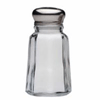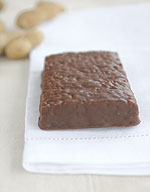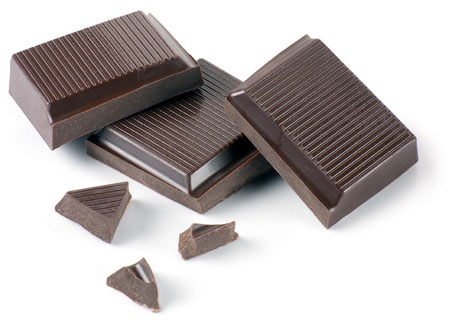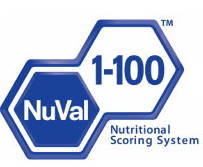The economy is an issue being discussed by just about everyone these days. As bank after bank crashes through the market, families are counting pennies and trying to make the best financial forecast for themselves. We want you to know that while you might need to put your spending habits on a diet, you don’t have to sacrifice your own diet of healthy, nutritious food. We’ve put together 10 ways that you and your family can still support a healthy lifestyle, and not break your own piggy banks.

1. Plan Meals. Make a weekly menu of your family’s meals. Build your grocery list off of this, and then stick to it. Avoiding nightly trips to the grocery store, or even calling in delivery for dinner, will save time and money. You’ll be able to better stretch ingredients, too. The fresh spinach you bought for tonight’s salads can be used on lunch sandwiches all week.
2. Be Prepared. Leaving the house for a few hours, or going to work all day? Keep your purse or cubicle stocked with healthy snacks like granola bars, nuts and popcorn, toss a piece of fruit in your bag before you leave the house, or take fresh vegetables to work. When hunger strikes, you won’t feel the need to whip into the drive-thru for a pricey quick-fix.
3. No Impulse Purchases. Don’t grab things off the end-cap at the grocery store, don’t scrounge for change in your desk for the vending machine, and don’t buy the cookies from the kids in front of the mall because you’d feel guilty otherwise. It’s money you never intended to spend, and calories you never needed to consume.
4. Go Vegetarian. Even if it’s just one night a week, switching to a vegetarian diet will save money on costly meat, introduce some variety to your meals, and fill your family with wholesome nutrients.

5. Shop Local, Shop Seasonal. Buy produce that is grown within 30 or 40 miles or less from your home, and only buy fruits and vegetables that are in season. You’ll support the local economy and enjoy the freshest produce. It’s quite costly to ship fruits and vegetables across the country- and your wallet is directly impacted when you buy Florida oranges in Nebraska in December.
6. Freeze It. If you find a sale on the lean meats, chicken and fish or even produce you regularly buy, then stock up. Place a serving’s worth in a baggy and toss in the freezer. It will feel like an investment up front, but you won’t have to buy those items later on. Then, just pull out one serving the next time you need it. Also, plan to make too much lasagna, stew or grilled chicken; then freeze single servings for quick lunches.
7. Buy Generic. Store-label brands have gotten a bad rap for low quality. Compare the labels- you’d be surprised that often times the store brand has better ingredients and healthier nutrition stats than the name brand. And you’ll always save money.

8. Drink Water. You should be drinking as much as you can everyday anyway. Coffee and soda really add up in cost when you’re consuming them throughout the day. Find an affordable filter and take advantage of the stuff pouring right out of your tap. Then buy a reusable container- buying bottles adds up and they’re bad for the environment.
9. Homemade, Homegrown. Start a small garden in your backyard and stock it with the fruits, vegetables and even herbs that your family consumes the most. Bake your own bread, make your own popsicles with fresh fruit and do weekend pancakes from scratch. You’ll control the ingredients, meaning they won’t be laden with fat and sugar, and the fresh-tasting quality will surpass anything on the grocer’s shelf.
10. Visit DietsInReview.com. Check the Diet Blog daily and the newsletter for the latest health and fitness tips and guidance. No need to pay a trainer or nutritionist, when our experts’ advice is available free!

 Here are their seven strategies, and a brief description. For more, check out
Here are their seven strategies, and a brief description. For more, check out  This additive has garnered much attention recently, and popular trainer Jillian Michaels noted that its the one thing she’d completely remove from grocery stores if she could. Noted on food ingredient labels as “Partially Hydrogenated Oil or Vegetable Oil,” consuming this can be detrimental to your health by promoting poor cardiovascular health and premature heart attacks. Read your labels closely, a food containing <.5g of trans fat per serving is permitted to list zero grams on its label (like
This additive has garnered much attention recently, and popular trainer Jillian Michaels noted that its the one thing she’d completely remove from grocery stores if she could. Noted on food ingredient labels as “Partially Hydrogenated Oil or Vegetable Oil,” consuming this can be detrimental to your health by promoting poor cardiovascular health and premature heart attacks. Read your labels closely, a food containing <.5g of trans fat per serving is permitted to list zero grams on its label (like  It’s possibly one of the most dangerous additives in our food supply. Everyone from food manufacturers, restaurant chefs and dear old mom use it in nearly everything we eat and drink. Whether used as a preservative or to enhance or better the flavor, foods high in salt/sodium pose a great risk to our cardiovascular health. The recommended daily allowance for sodium is 2,400 mg, or 1 tsp. of table salt, per day. Fast food meals like McDonald’s Grilled Chicken Ranch BLT combo (~1785 mg Sodium), can contain close to, if not more, than an entire day’s worth of sodium.
It’s possibly one of the most dangerous additives in our food supply. Everyone from food manufacturers, restaurant chefs and dear old mom use it in nearly everything we eat and drink. Whether used as a preservative or to enhance or better the flavor, foods high in salt/sodium pose a great risk to our cardiovascular health. The recommended daily allowance for sodium is 2,400 mg, or 1 tsp. of table salt, per day. Fast food meals like McDonald’s Grilled Chicken Ranch BLT combo (~1785 mg Sodium), can contain close to, if not more, than an entire day’s worth of sodium. Protein bars, weight loss bars, meal replacement shakes, build your immune system bars, and the list goes on and on. For the most part, the bars taste like chalk. How do you know what to spend your money on? Which product is best? Well, for me personally, I am not a fan of
Protein bars, weight loss bars, meal replacement shakes, build your immune system bars, and the list goes on and on. For the most part, the bars taste like chalk. How do you know what to spend your money on? Which product is best? Well, for me personally, I am not a fan of 
 With
With 








 Fat serves numerous roles in the body:
Fat serves numerous roles in the body: e only thing that can make a difference for you, you can still be working from an internal locus of control if you are doing everything within your power to get yourself there.
e only thing that can make a difference for you, you can still be working from an internal locus of control if you are doing everything within your power to get yourself there.